Pedro: I’m not that old! I started surfing in the early 1980s, so I guess, well, you could call that old.
Interviewer: You are far younger than many of my interviewees who are in their mid-eighties! The reason we’re interviewing you for the old side of surfing is because you are making a documentary on the history of surfing in the Azores as well as because you’ve been doing it for a long time and when you started surfing was not a particularly popular sport.
Pedro: That’s one of the things we are going to write about in our documentary. Traditionally the Azores, although being an archipelago and in the middle of the ocean, is not an ocean orientated society. It is very agricultural. People used to work the land, fishing was not a very important part of the economy up until 2000s and even today. What we are trying to investigate and to work out in our project of the history of surfing is how in the last 20 to 30 years Azorean society became more aware of the importance of the ocean and the seashore and the coast and the waves and the role that the surfers had in changing that mentality. My theory is that surfers played a very important role in changing this mentality and idea. When I started surfing in the early 80s one of the most important beaches that you have for surfing today, which is Santa Barbara, used to look completely abandoned, used for illegal of harvesting of sand for construction. In thirty years, this has completely changed. Now you have Santa Barbara as one of the most important and iconic tourist destinations on the island, you have all year-round lifeguards, a beach bar, one of the most important parts of life on the island today. What we are defending is that it was the surfers which rescued this land and gave us some awareness of what it could do for our society and for sport and for tourism.
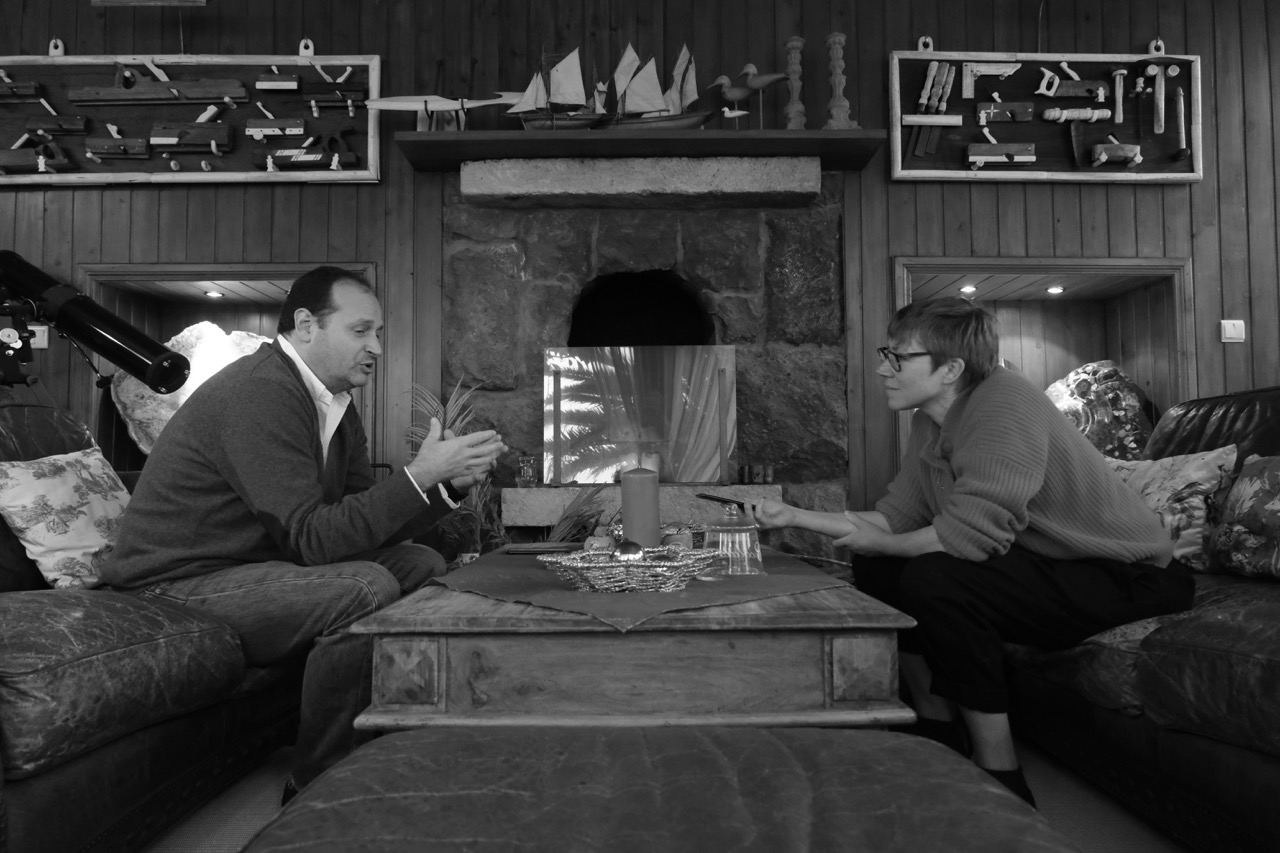
Interviewer: It is so fascinating, this story of changing perceptions of the ocean. We have a neighbour in our town of Capelas who is terrified of the ocean. He sweats if he sees a puddle. And we moved here to be close to the ocean. It’s ironic.
Pedro: Up until recently people living in Sete Cidades would not see the ocean. You have to understand we are deep in the North Atlantic, so the winter is intense. Even up until the beginnings of commercial airlines you had to travel by sea – it was rough to travel here. It was merely from sheer necessity that Portuguese sailors had to use the islands for a platform of navigation, because they had to do Volto do Largo, which is the roundabout. When they came up from the Cape of Good Hope in South Africa, coming from India, the winds would take them all the way up to the Azores, so they would find favourable winds to return to Lisbon and Portugal. That’s why the Azores are populated and that’s why people live here and why we exist as a community. But even because of that it was very rough to come here, the winters were heavy, there was a lot of sinkage. Traditionally people started to have a closer relationship to the land than with the sea. When I started surfing in the 1980s, I couldn’t tell my grandmother that I was going to surf on the North Shore.
Interviewer: So, as I understand it, the sea was until recently a bad thing.
Pedro: Yes. The sea was where pirates came from, storms came from. One of the things that we are studying for our research is the whaling. The main centre for the whaling industry was the East coast US and they would come here and take crew. They would take young men that would flee from their homes and run away with the whaling ships. So the idea of the sea being like a pirate that would take your riches and your young, it’s something that is very, very deep in the mentality of most of the people in the Azores.
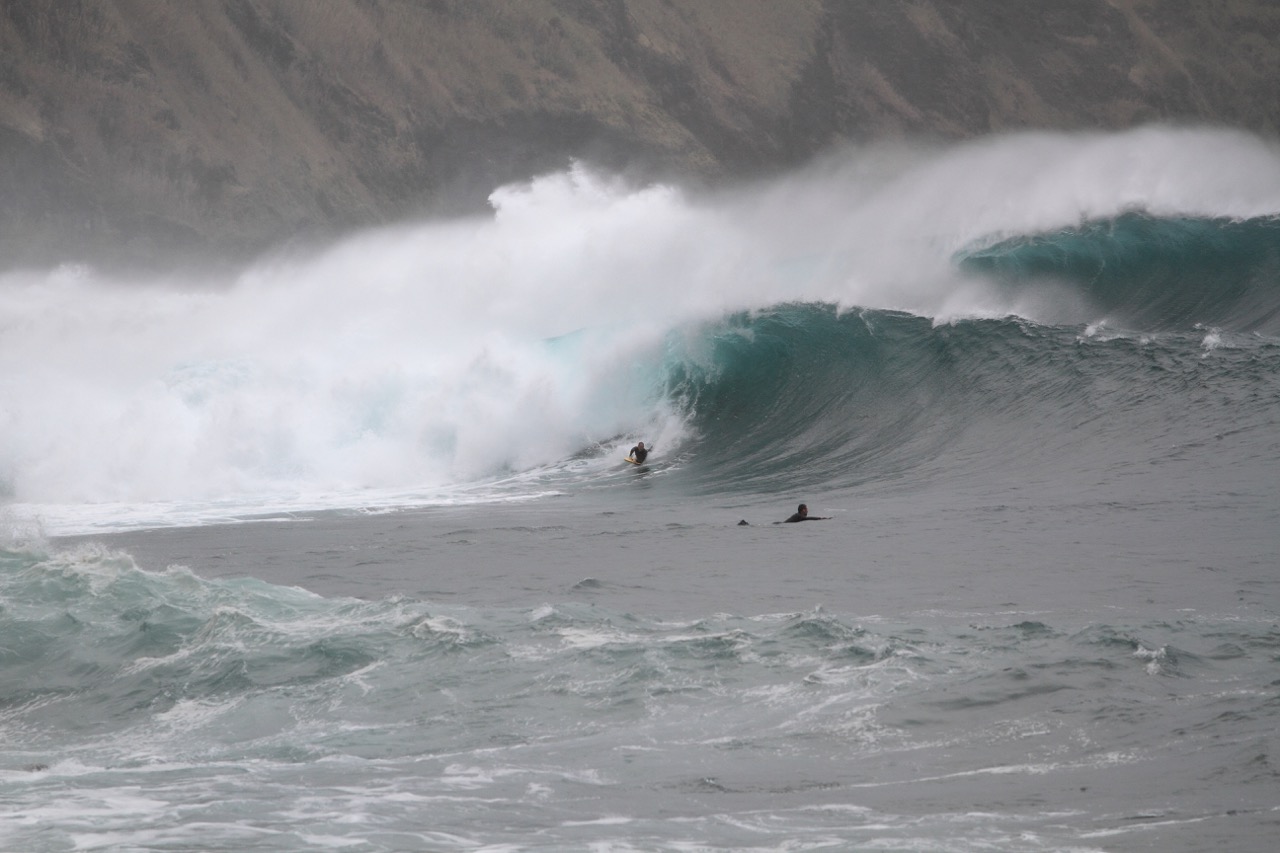
Interviewer: Could you describe that moment when you decided to have a go at surfing, when you were growing up?
Pedro: Well, I was actually born in Lisbon, my family is all from here, from the island, but I lived in Lisbon and started surfing in Lisbon and we would come on holidays here. I was like 8, 9, 10 years old and I would bring my board in the summer. There were very few people bodyboarding or surfing or going into the water for recreation. There were some sailing clubs, and they would do sailing regattas and stuff like that, but going into the ocean and surfing was relatively rare. The idea was you could go safely to bathe around the south part of the island, but you could not go to the north shore because that is where people got killed. The tradition is that people got drowned there. The first airport in the island was near Santa Barbara, in a place called Santana and there were a lot of American military that died on that beach. They would go there to swim and they would drown. So, there was a big tradition of people being afraid of the North shore. And we were 14, 15-year-olds and we would hitch hike along the road along the south to take us to the North to surf.
Interviewer: So how did you find out that Santa Barbara was the place to surf?
Pedro: Well, it was word of mouth, older guys who already had cars. We would drive around the island looking for good spots. It was all about discovery, searching for good waves, mapping the place, the reefs, the coves, the bays, a lot of investigation. It was basically the search, growing up searching for waves.
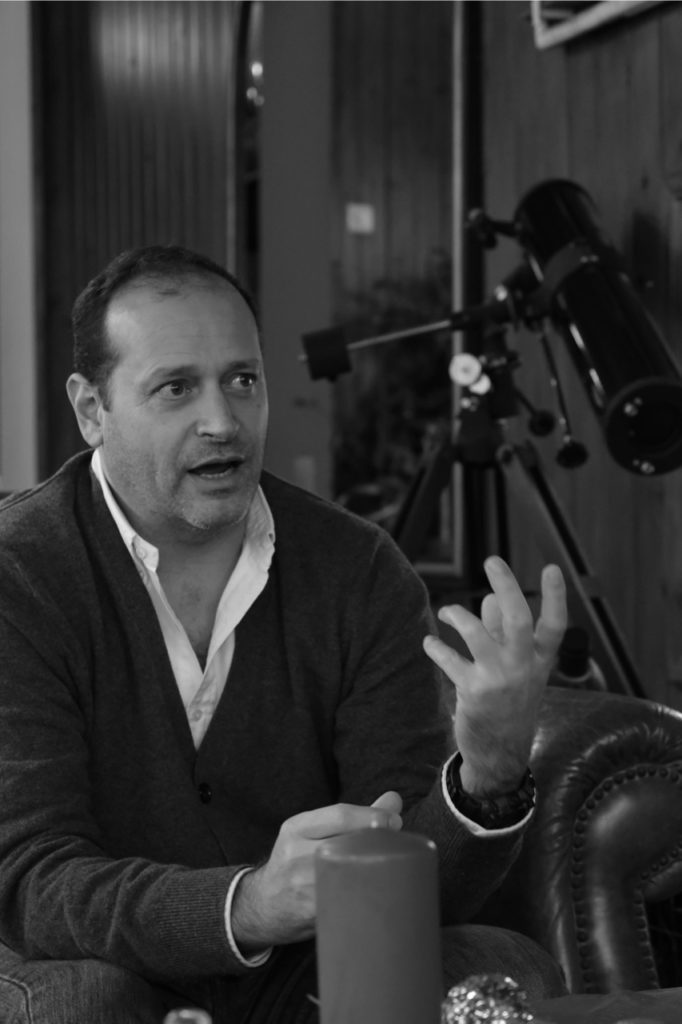
Interviewers: In some ways how lucky and how privileged you were to have been able to do that. So many other places in the world are very established as surf spots.
Pedro: I think the seventies and the eighties, almost the same generation, 10 -15 years apart, but we were like the pioneers, we were the first ones to really go and find out where we could surf, how we could surf, the best beaches, the best places, the best times of years. It was happening a lot in São Miguel but also in Terceira and some in Faial. We were the first local generation, because you had surfing here ever since, well, I have a theory about this. The first Europeans to settle in Hawaii were Azorean – the Azorean whalers. More than Cook, more than the British or Americans, all the way up from 1820 until 1870, you have five hundred to six hundred Azoreans settling and living in Hawaii. What we are trying to find out is did they surf, how well did they surf, how well did they get to know the surf history of Hawaii. And then there is proof, and we know, that American soldiers bought surfing into the islands. So, all the way from the First World War to Second World War we know that they were surfing in the Azores. They were first based in Santa Maria in ’53. The British were in Terceira, but then they went to Terceira, and this is a picture of Praia da Vitoria in 1947. Can you see the surfboard? By the lifeguard tower, there’s a surfboard there and that’s Praia de Vitoria 1947. So, we know that people were surfing here, but the first local surfers started in late seventies, early eighties and that’s the generation I am in.
Interviewer: How difficult has it been to find out your information?
Pedro: It’s been hard, even in English, in the US and the UK, there’s not a lot of work done about surf history. There are very few books, very few academic studies, there is not a lot of written material. There are some newspaper stories, some research, investigation. Part of it is speculation but there is enough to connect the dots and come to a pretty precise idea that even though we do not have much written evidence or photographic evidence for sure you knew it happened. For example, we know that any European that arrived in Hawaii during the 19th century would have got in contact with surfing. Some of the first writing about surfing are Cook’s shipmates. Some of the first things they thought impressive enough to write about were surfing and the relation of Hawaiians to surf. So, for sure, when the Whalers arrived, they would see surfing and would know surfing and see the boards. We know that that happened. There is also another interesting story, there is a third generation Hawaiian, a gentlemen called George Cunha and he’s the grandson of the first Azorean woman to settle in Hawaii, a woman called Lorena Cunha. Have you ever heard about Duke Kahanamoko? Duke is considered the father of modern surfing. He was a Hawaiian and in the early 20th century made surfing popular, travelling around the world giving surfing demonstrations and swimming demonstrations. George Cunha is a third generation Portuguese Hawaiian and his grandmother was Azorean from Pico. George went with Duke to Australia and New Zealand in 1912 to show surfing and teach surfing. You see there is a connection. Can we call George Azorean? No, he is third generation Hawaiian Portuguese. But his mother probably spoke Portuguese and they would know the traditions and know where they came from. So, there is this connection that we are trying to establish, building the importance of Azoreans in Hawaii and in the development of surfing in early 20th century.
Interviewer: If we could just a little bit more about how surfing has changed the attitude of what the sea can be, from frightening to something nourishing perhaps.
Pedro: I think the first thing is fear. For hundreds of years there was fear and respect for the ocean, and I think surfers changed that perspective. People could look at the ocean and see it not as a frightening thing but something that can be enjoyed. Ribeira Grande is very representative of this change. You have a village that was practically living with its back to the ocean. Although there was this immense and inviting beach people had their backs to it, even in the summer people weren’t going swimming. When we went surfing to Santa Barbara there was absolute no-one on the beach.
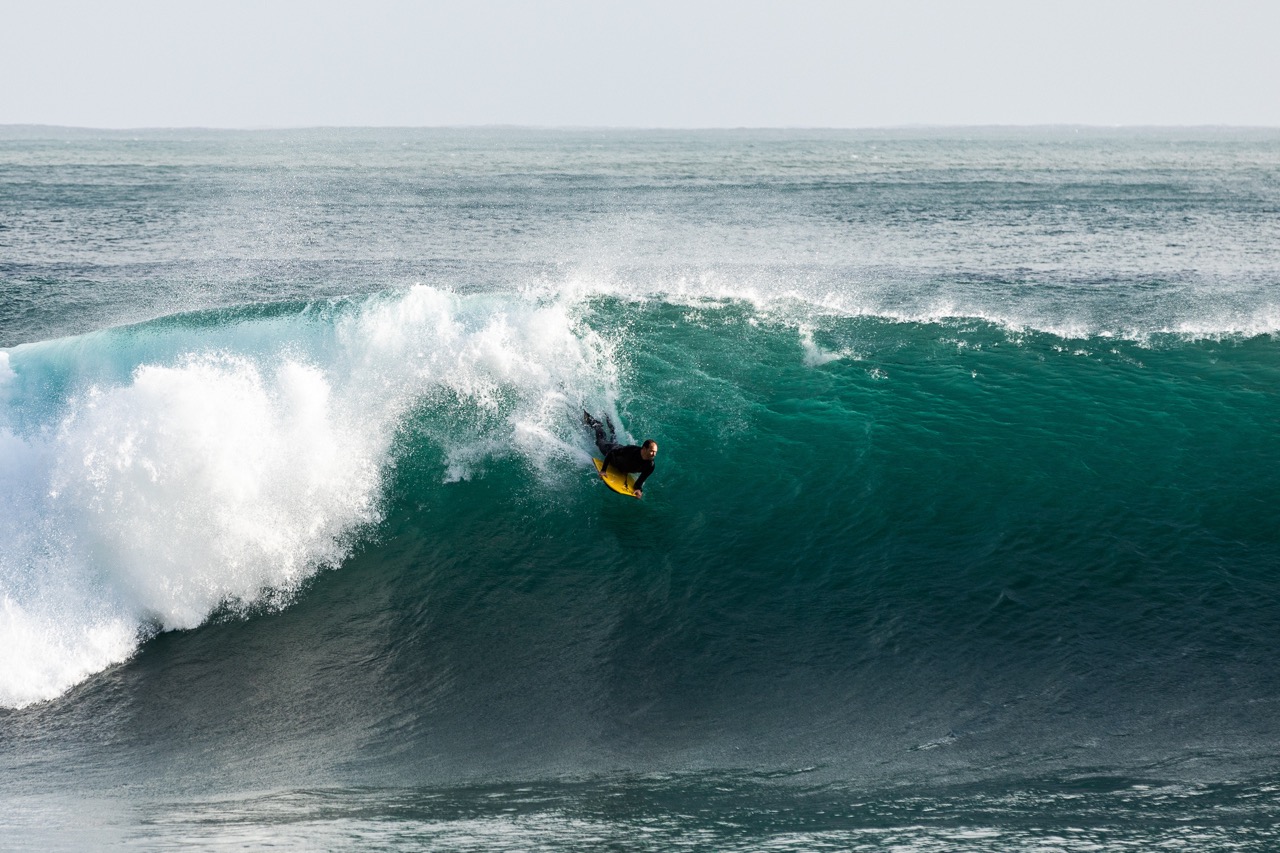
Interviewer: Did your parents know you were going?
Pedro: No, we wouldn’t say. I might have told them when I was 15 or 16 but I couldn’t tell my grandmother. They would say, don’t tell your grandmother you are going there, she will be afraid. And it was only when we were in our 20s that it became popular and acceptable and people were aware of what we were doing. Rabo do Peixe, used to be a very important wave and a place where we would surf a lot, and there was an immense curiosity from the fishermen and the people in the village. They would come to see us and mock us and tell us things – don’t go there, it’s dangerous! Stuff like that. We would go anyway, and people would see us come out with smiles on our faces and that would break this idea that the ocean and those waves were dangerous. And this is the most important change in the last thirty years.
Interviewer: And now we see surfing become more and more popular on the island for locals and tourists. Can you tell me a bit about how you feel about the increasing popularity of surfing?
Pedro: Well, there is a big debate about this as you know. There are basically two positions, those who hate it and those who love it. There seems to be a very extreme polarisation between unhappy locals and people doing well, those with the surf schools and developments that gain from tourism and surfing developing as a whole. When we were surfing in the nineties it was just us and a couple of surf travel groups who would come two or three times a year to visit the islands and that was that. In the early 2000s the first international event organiser came and said he was interested in holding an event here and there was this big discussion between the local surfers. Should we do it, shouldn’t we do it, is it worth it. There’s the same discussion going on now around mass tourism. My point of view was that it is inevitable, it is going to happen whether we want it to happen or not and so it is best that it happens on our terms, and we get involved in it from the start rather than having people coming from abroad and talking with the politicians and getting money without any involvement from us. We started our own association and club back then because of that. We got involved with the development of the first contests and realised there was going to be a lot of notoriety for the waves of the Azores in magazines and online which we would have to try to use to our advantage. Some of the money should be reinvested in supporting local schools and in training local kids. All the reconstruction that you see in Santa Barbara now happened because of the surf contests. What is going to happen in Monte Verde, cleaning up the sewerage and reconstructing the seashore, is because the surfers were there and showed the politicians that that was important for the economy of the town. So, I think that as long as the local surfers are involved with what is happening and they are heard and have a voice and are active enough to get their points of views known, there are benefits. Of course, some things will go wrong. It’s always too much. I don’t go to Santa Barbara in the summer now for example, if there is more than 30 or 40 people in the water, I won’t go in. But there are other places which I go. I usually say that surfing and bodyboarding are winter sports and for me it’s better in the winter than the summer. It’s all a question of understanding that change is going to happen, and that progress is there whether negative or positive. What is important for me is that you must participate in these changes so that it goes the right way instead of the wrong way.
Interviewer: I think you’ve put quite succinctly that whilst there are negatives to commercialisation there are great benefits from having a greater number of people caring about the ocean and caring about the environment.
Pedro: I’ll give you an example – surf schools. For most surfers these days the worst thing you can have are surf schools because surf schools popularise the sport. There is a democratisation of surfing so that everyone can surf, everyone can go in the water. For me that is more positive than negative because even if one hundred people have a surf lesson and if fifty of them become surfers and 25 of them become proficient or even good surfers, the other 75 will have a respect for the ocean and an interest in the safeguarding of the beach. They won’t be all year-round surfers but they will have it in their life. For the other 25, those who become real surfers and committed surfers that they will surf all year, they will become voices and participants in defending the ocean also. That for me is the most important thing. If there is 30 or 40 people in the water, then it’s your option if you go in or not. So, for me the positives are bigger than the negatives. There are dangers but if you are aware then I think the good will always outweigh the bad.
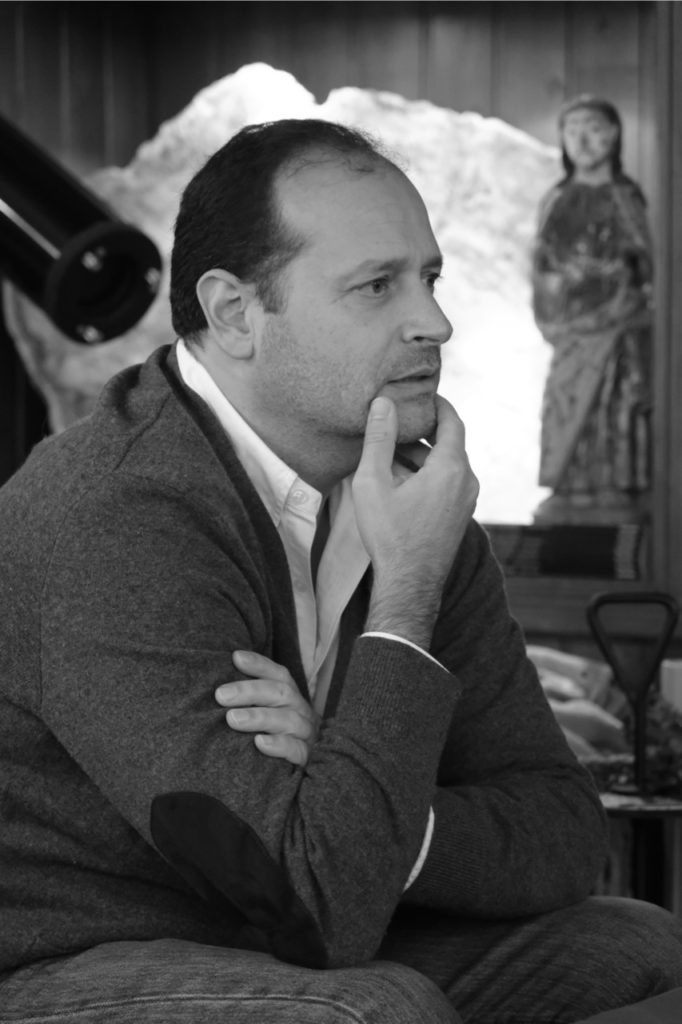
Interviewer: Thank you, that’s a thoughtful answer. I’m also interested how the waves themselves have changed and the environment, whether you are seeing any effects of climate change here?
Pedro: From what I see there are two big differences. Human intervention in the seashore, for instance in Rabo de Peixe. The politicians and the economy destroyed a very important wave by building the fishing harbour. At the same time the opposite happened in Santa Barbara. From a desolate place for stealing sand you have one of the most vibrant places on the island. They have built an enormous amount of infrastructure. If it’s built right, it’s better. If there are four or five hotels built in the hill and they are good hotels with good projects, the hotels themselves are the first ones that have an interest in protecting the beach. I would say some of the biggest changes have to do with development and economy. For instance, in Terceira we were able to protect and preserve a wave because we were able to show the politicians that people would come to the island purely to surf this wave and so they protected it. The other change that I would say has happened in last 30 to 40 years is the severity of the winters. There is more storms, bigger storms and more forceful hurricanes and low pressures and as you know hurricanes and low pressures are the foundation of swells and swells what give birth waves. I would say there are definitely more periods of waves and good waves because of the severity of the North Atlantic winter storms. Even the hurricane season, September and October, is more severe. It used to be rare that we got hurricanes here. Now we do have them. Hurricanes would form on the equator, come into the Atlantic and they would fade away by the time they got to us. Now they just keep coming and getting stronger and stronger until they come with force 3 and 4 hurricanes which was far rarer than it is now.
Interviewer: Please tell me your favourite place to surf on the island? Your perfect surf day.
Pedro: A place I’ve been surfing in the past few winters is in the north-east of the island, called Faja de Araujo, for me it’s the best place to surf. Firstly, it only breaks when it is big, a big swell. Not many people go there, half a dozen friends. The scenery is also so special. Stunning. It’s almost like a small surf trip. I leave home early in morning, six or seven am, there’s a half an hour or forty-minute drive and you go and there is this really isolated place with a perfect left hand break and for me that is the ideal surf at this stage in my life. But then Mark Richards used to say the best surfer is the one that is having the most amount of fun in the water, so for me it’s all about going out and having fun, either alone or with a couple of friends, early morning, off-shore winds, glassy, beautiful. I’m completely against localism. I usually say that you’re only a local if you never travelled because if you have ever travelled for waves, you know what it is like. Why should you not share your own waves? There’s no secrets in the age of Google Earth. Greg Long is a very famous surfer who came to surf the Azores, in Flores, and he found out about the Flores wave through Google Earth. He checked the swell, he saw the pictures and went there on his own with a photographer. No local surfed that wave when he went there. And for me, this is part of the story we’re trying to tell with the history of surfing in the Azores. The beginning was because people from the outside bought surfing here, they bought the boards, they came here and showed people they could surf. So, for me it’s ridiculous to think you should not welcome surfers from other places. If Duke Kahanamoku hadn’t gone and shown people surfing it would have stayed in Hawaii. So, for me it’s nonsense that you should keep spots for the locals and secrets. It doesn’t make sense. The waves and the ocean are there for everyone to share and enjoy. The best feeling you can have is to surf with a couple of friends. I like to surf alone, I surf a lot alone, but for me one of the most joyful pleasures is cheering people on and surfing with friends. That’s the fun and enjoyment and you can’t have that fun if someone isn’t there. Some of the best friends I have, have been made through surfing.
